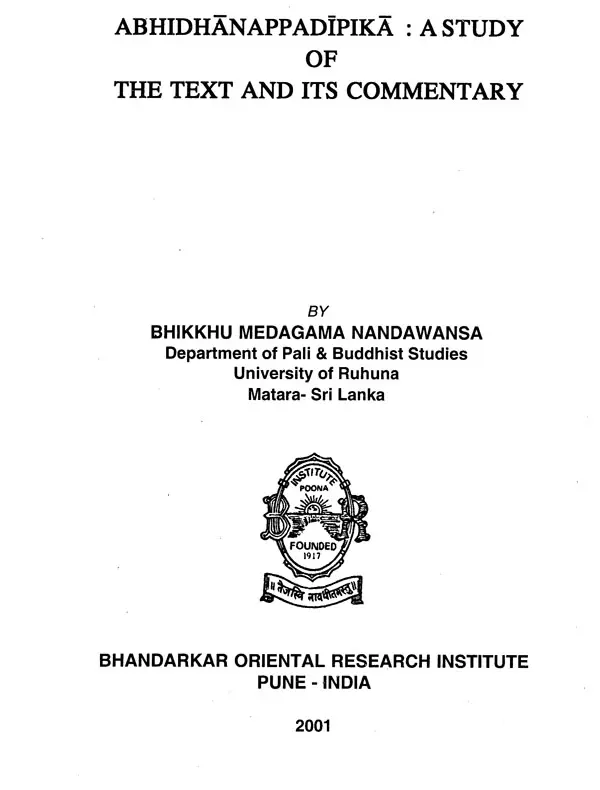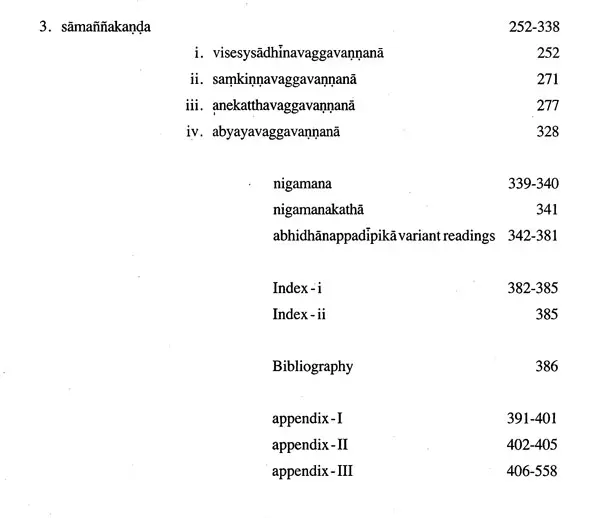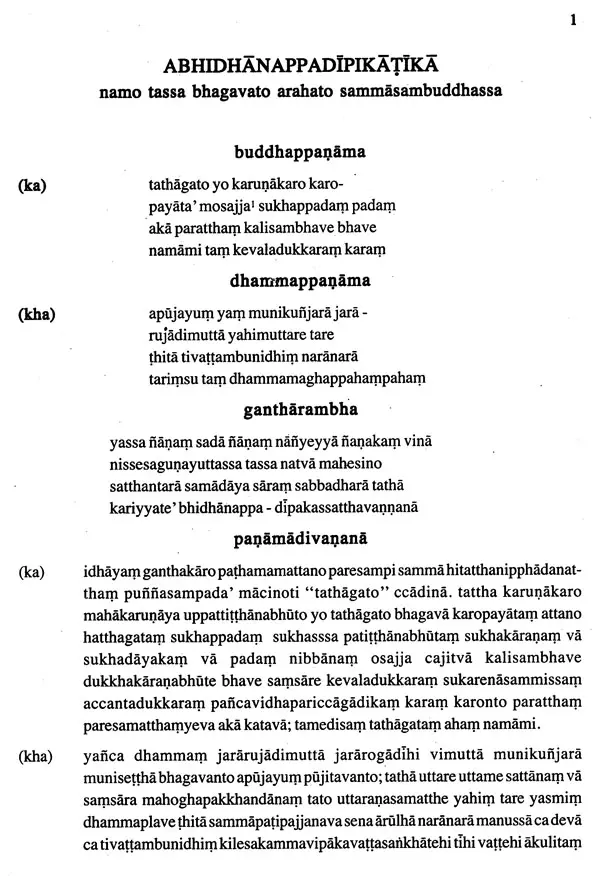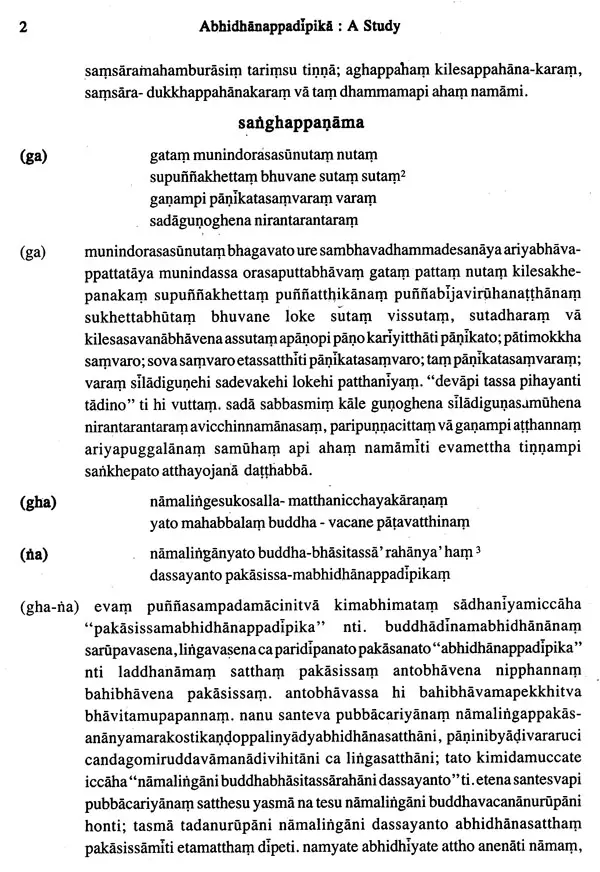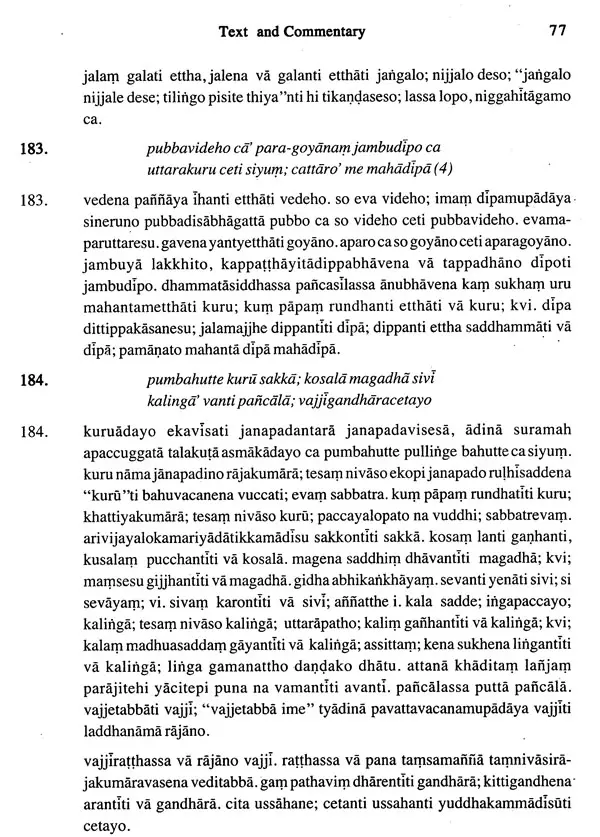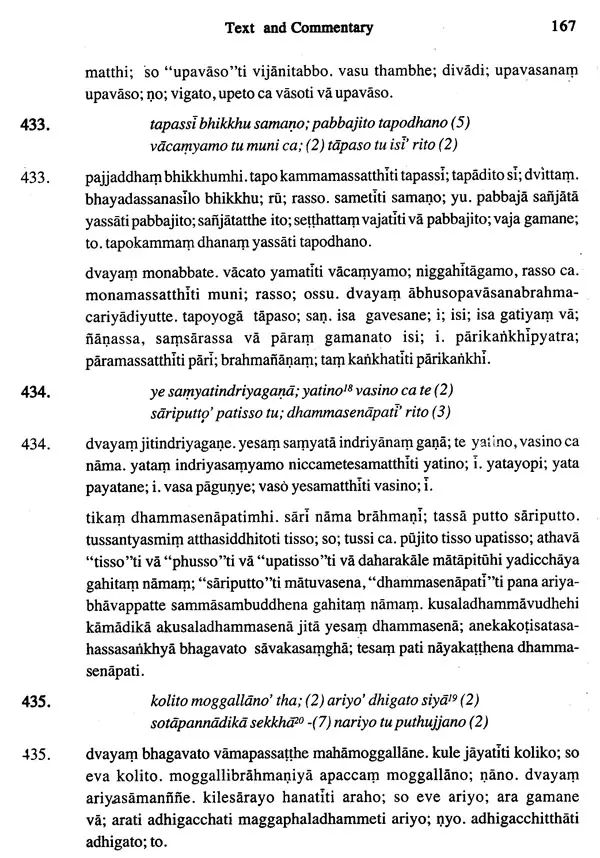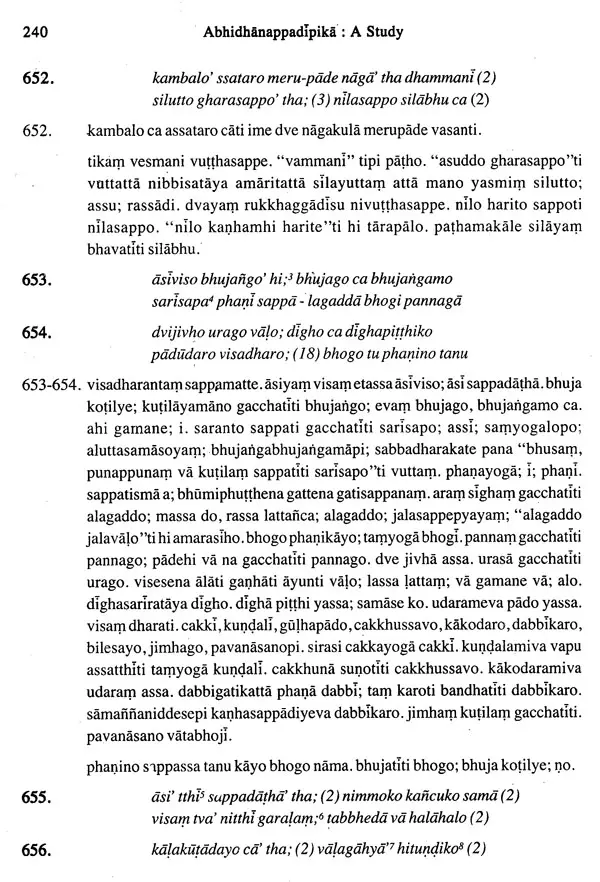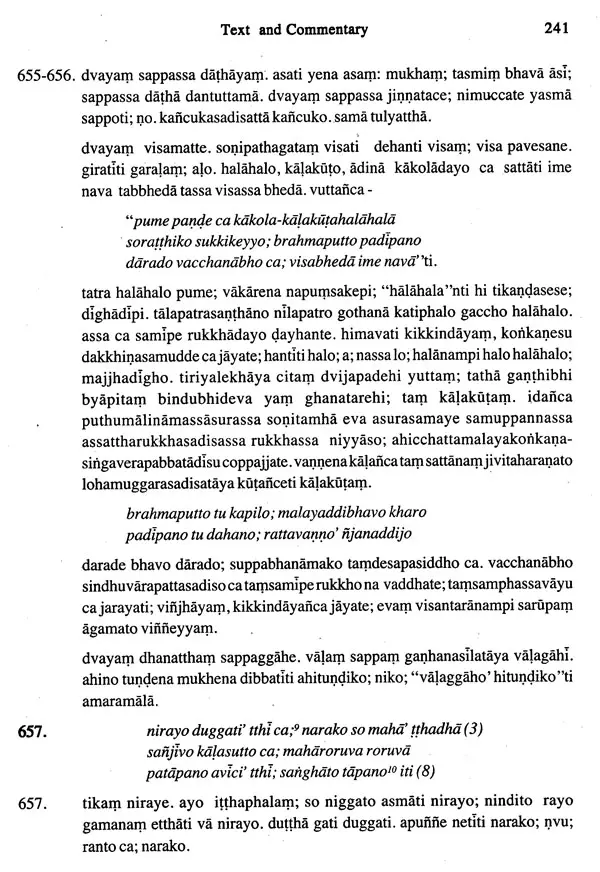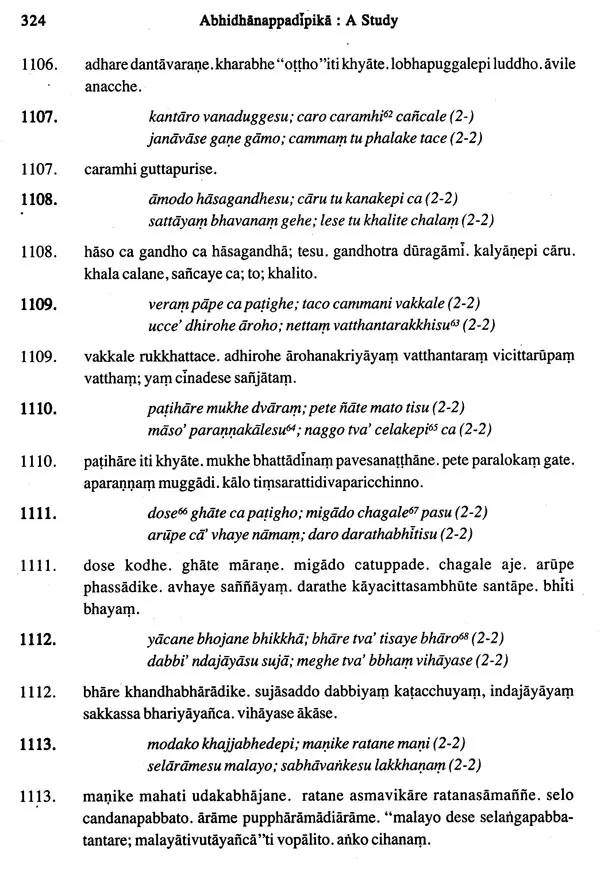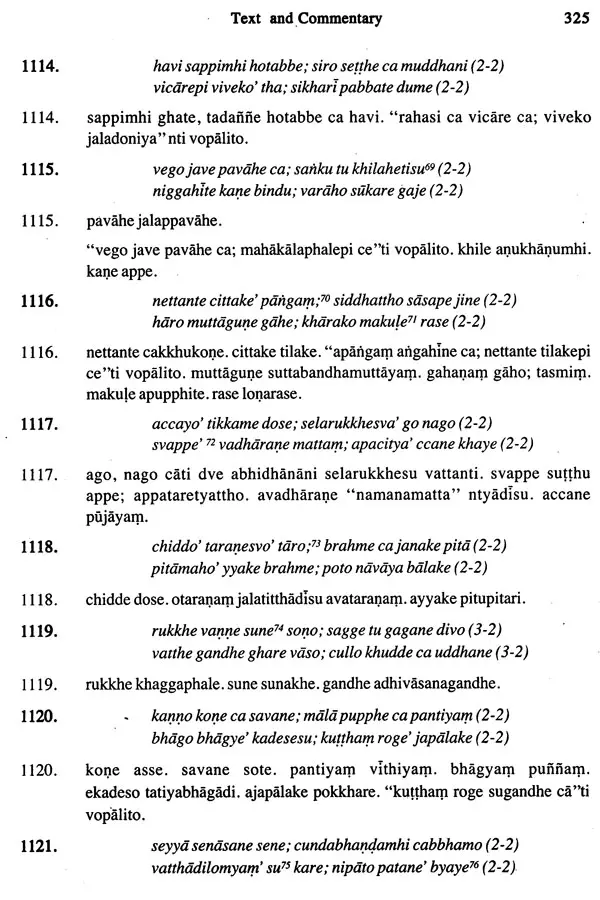
Abhidhanappadipika : A Study of The Text And Its Commentary (An Old and Rare Book)
Book Specification
| Item Code: | UAN435 |
| Author: | Bhikkhu Medagama Nandawansa |
| Publisher: | Bhandarkar Oriental Research Institute, Pune |
| Language: | English |
| Edition: | 2001 |
| ISBN: | 9788194118299 |
| Pages: | 556 |
| Cover: | HARDCOVER |
| Other Details | 9.50 X 7.00 inch |
| Weight | 1.03 kg |
Book Description
It gives me great pleasure in placing in the hands of the Pali-Buddhist scholars the first Romanised text of the Abhidhanappadipika, a dictionary of synonyms in Pali. This is the only available Pali lexicon written in the twelth Century A.D. by one Moggallana of Sri Lanka, Whether he was the same Moggallana who wrote the celebrated Grammar of Pali is a matter highly contraversial. personally believe that the lexicon was written by a Cula (Junior) Moggallana, setting before himself the model of Amara's welf-known lexicon in Sanskrit.
The Dictionary conprises three parts, dealing with "celestial, terrestrial and miscellaneous objects". Every part is further divided into several sections, which are not all mutually exclusive. For the purpose of memorisation the author has versified all his matter.
A Samvannana was written on the work by a Burmese Officer-of-State under the reign of king Kittisihasura. (A. D. 1351.). There exists a Burmese translation of the Eighteenth Century and a sanna (paraphrase) as also a tika (commentary). The sanna is older and more valuable than the tika. (For details read Pali Lit. of Ceylon. by G. P. Malalasekera. pp. 187-189).
The present edition forms a doctoral thesis presented to and accepted by the University of Pune for the Degree of Doctor of philosophy in Pali. Its author Madagama Nandvamsa is a young Buddhist monk of Ceylon who carried his present research under my guidance. He can read with ease Burmese and Thai scripts and has a working knowledge of German and Franch. The work is based on a minute collation of the Simhalese, Burmese and Thai texts of the lexicon. It gives also the full text of the commentary. He has discussed in details the question of the authorship of the work and the value of the Commentary.
Being the only of its kind the Abhidhana-ppadipika and the commentarial literature on it occupy an important position in Pali exegetical work.
This Romanized edition of the Abhidhanappadipika and its Tika was prepared by collating the following texts in Sinhalese, Burmese, and Thai Scripts.
1. Abhidhanappadipika (3rd edition) ed. Waskaduwe Subhuti Thera, Government Printer, Ceylon, 1900
2. Abhidhanappadipika Sannaya Hevat Palinighandu Sannaya, (Sinhalese Translation of Abhidhanappadipika or Pali Vocabulary), ed. Totagamuwe Pannamolitissa Unnanse, Satyasamuccaya Printing Press. (Ceylon), 1895
3. Abhidhanappadipikatika, (Burmese) Chatthasangayana edition. 1964
4. Abhidhanappadipikatika, (Burmese) ed. Vanietsaya Nyunt, Rangoon, Pyigyi Mandyin Pomnika Press, 1292-Jan. (Burmese Year) - 1930 A.D.
5. Abhidhanappadipikatika, (Thai) Janasangama Viharavasina Sirisuddhivamsattherena parivattita, (Thailand), 1984
6. Abhidhanappadipikatika (Sinhalese -Ola-manuscript, Colombo, Museum) Copy written by the members of the Grhasthapravrjitasabha of Galle, Ceylon, B.E. 2413 (1869 A.D.)
The present edition primarily based on the Burmese Chatthasangayana edition of the Abhidhanappadipikatika, as it seems more clear, systematical and reliable, eventhough there are many variant readings as far as the Abhidhanappadipika is concerned. The variant readings of the Ab are given at the end of the text. The Abhidhanappadipikatika also known as Abhidhanappadipikavannana was originally written in Burma in the fourteenth century by a minister named Caturangabala. It has been edited and printed twice in Burma, the latest being the Chattasangayana edition. The Chatthasangayana edition is commendable as it has been prepared carefully with many valuable footnotes and several indexes. The Thai version of the Abt is nothing but the transliteration of the Burmese with a little modification. For instance, the Thai edition has omitted almost all the Burmese words and replaced them by Pali terms, giving it more international standard. However, there are many printing errors and omissions which lower its value. These shortcomings would have probably been avoided if the editor had been more meticulous in his job. The Sinhalese ola-leaf manuscript found in the Colombo Museum was copy-written by the members of the Grhasthapravrjitasabha (Society of clergy and laity) of Galla, Ceylon, to be kept in the library for tha pali texts in the East, established by the governor or Sri Lanka (during that time).
**Contents and Sample Pages**
